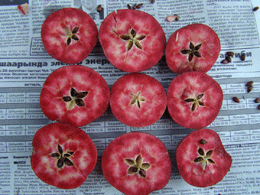Fuad Gasi tells us about an interesting effort to document the diversity of fruits in the former Yugoslavia.
A new regional collaboration between the Faculty of Agriculture and Food Sciences, University of Sarajevo and the Faculty of Agriculture, University of Zagreb has been established in the field of fruit (including Vitis) genetic resources. This collaboration is being strengthened through the SEEDNet project (South East European Network on Plant Genetic Resources) financed by SIDA (Swedish International Development Agency). So far, we have had a publication on apple genetic resources in Bosnia and Herzegovina as a result of this collaboration. We are currently preparing a similar publication on plum genetic resources that will present results of a study made on autochthonous plums from B&H, Croatia and Serbia, focusing mainly on different synonyms of Pozegaca, but not exclusively (molecular and morphological data, as well as some food processing qualities). Similar work has been done on the chestnut and is currently being done on the pear.
 What really struck me, though, was not the utter imbecility of the reporter, or even what the bloody apple looked like. It was the fact that nobody had seemed to ask whether this was in fact the world’s first red-fleshed apple, as reported by
What really struck me, though, was not the utter imbecility of the reporter, or even what the bloody apple looked like. It was the fact that nobody had seemed to ask whether this was in fact the world’s first red-fleshed apple, as reported by